
How to Use WS2812 RGB LED matrix 5x8: Examples, Pinouts, and Specs
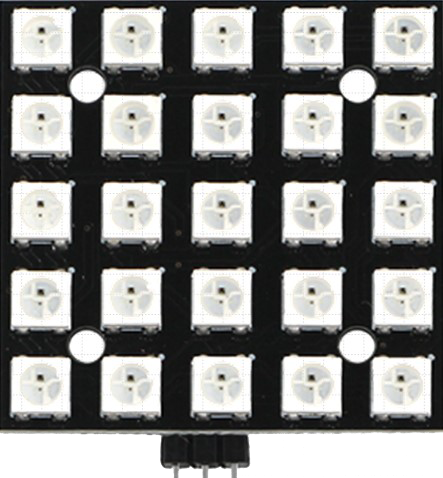
 Design with WS2812 RGB LED matrix 5x8 in Cirkit Designer
Design with WS2812 RGB LED matrix 5x8 in Cirkit DesignerIntroduction
The WS2812 RGB LED Matrix 5x8 (Manufacturer Part ID: WS2812B-25P) is a compact and versatile LED matrix manufactured by Adafruit. It consists of 40 individually addressable RGB LEDs arranged in a 5x8 grid. Each LED is capable of displaying 24-bit color, allowing for vibrant and dynamic lighting effects. The matrix is controlled via a single data line, making it easy to integrate into a variety of projects.
Explore Projects Built with WS2812 RGB LED matrix 5x8
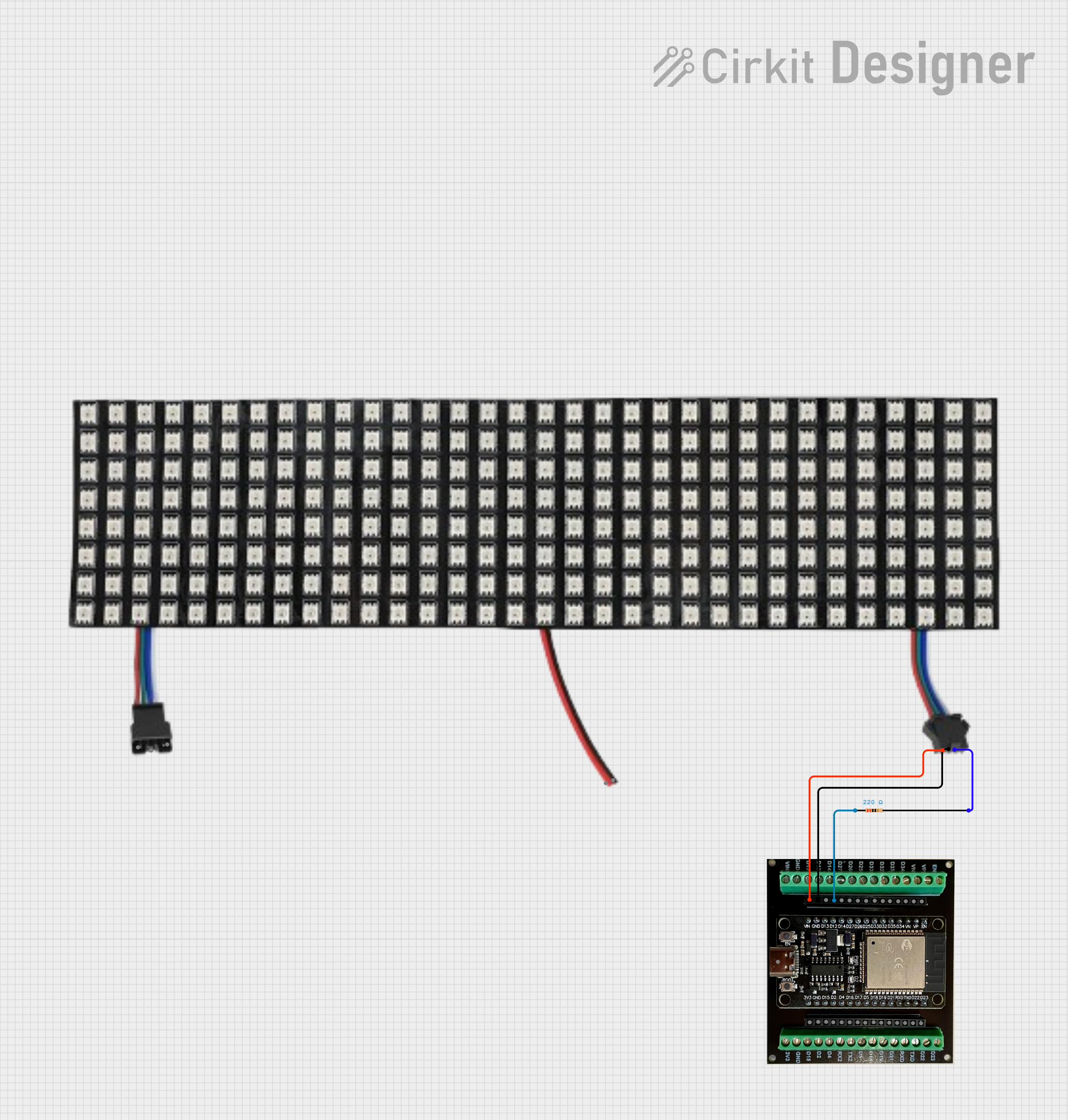
 Open Project in Cirkit Designer
Open Project in Cirkit Designer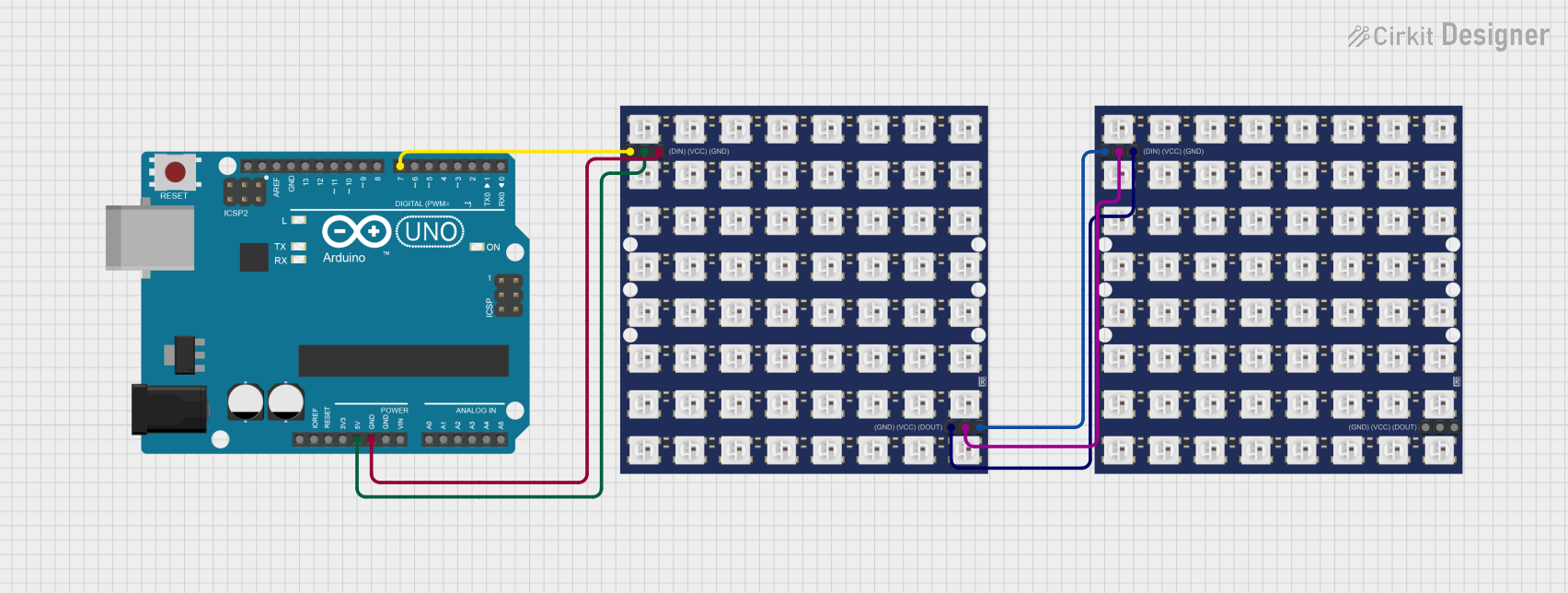
 Open Project in Cirkit Designer
Open Project in Cirkit Designer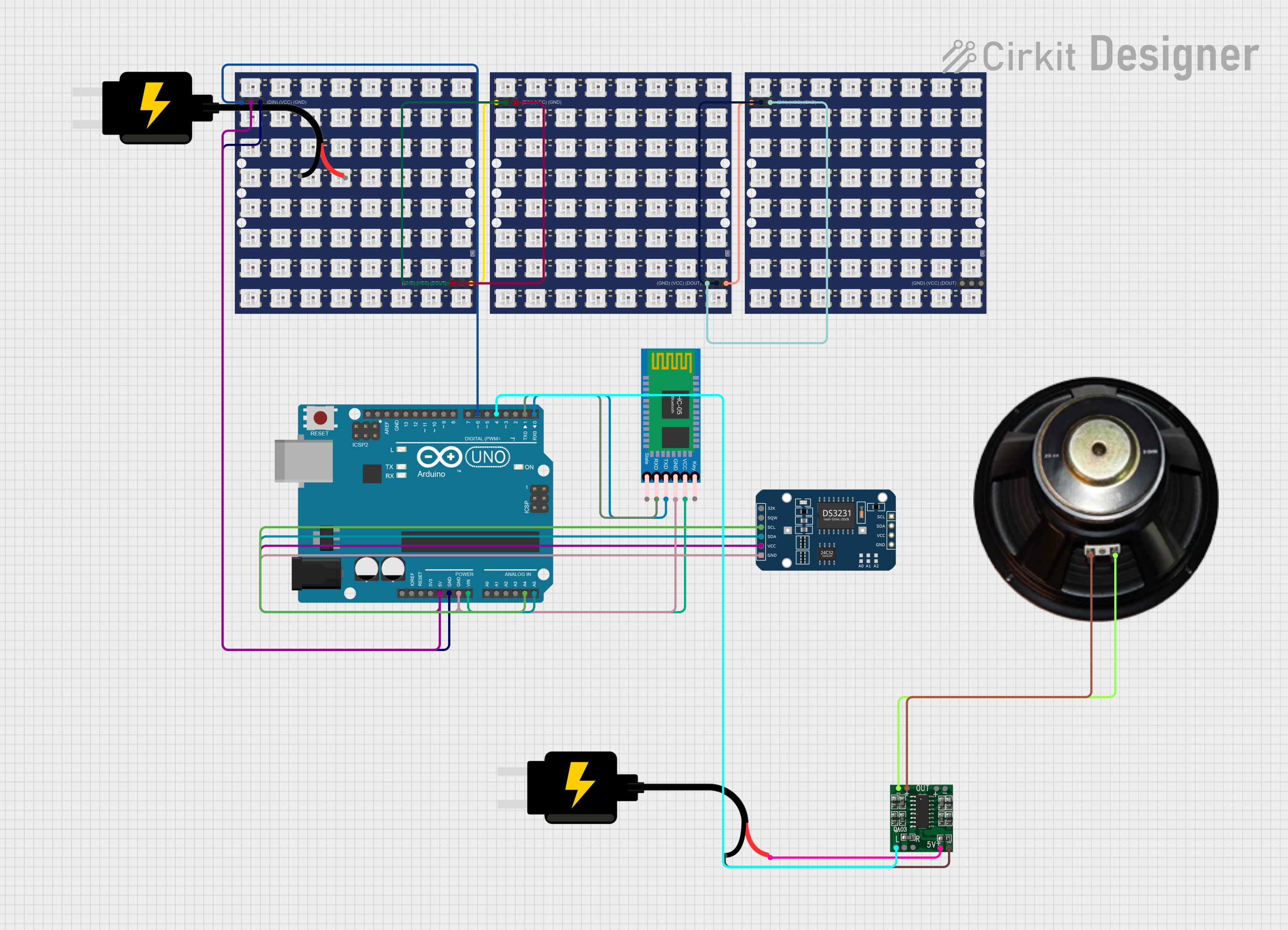
 Open Project in Cirkit Designer
Open Project in Cirkit Designer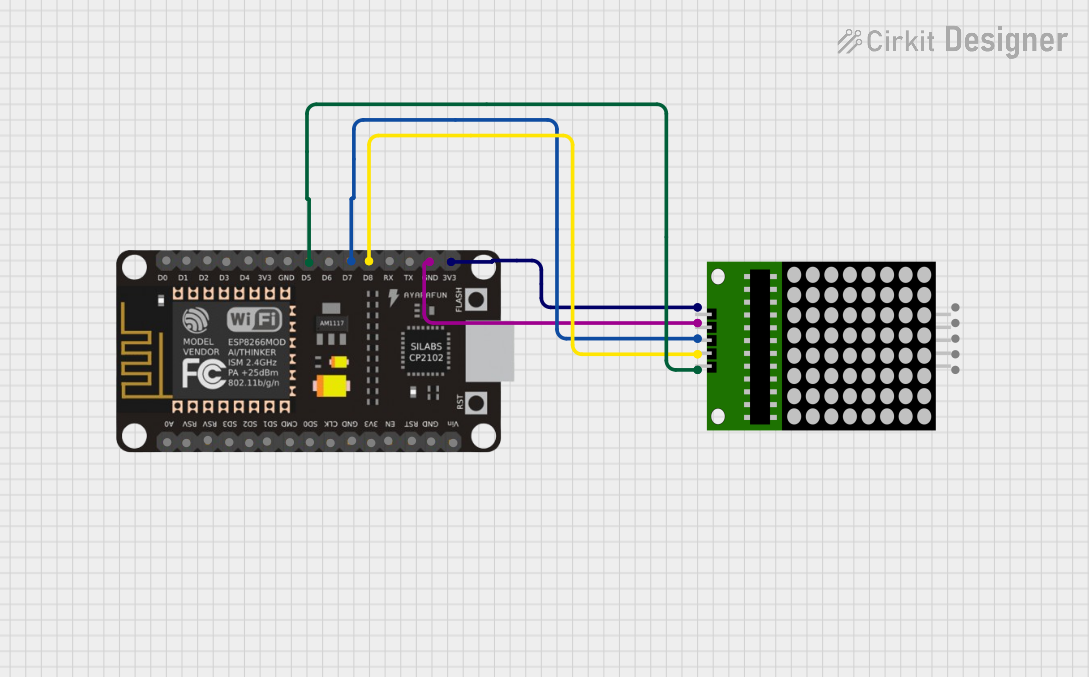
 Open Project in Cirkit Designer
Open Project in Cirkit DesignerExplore Projects Built with WS2812 RGB LED matrix 5x8

 Open Project in Cirkit Designer
Open Project in Cirkit Designer
 Open Project in Cirkit Designer
Open Project in Cirkit Designer
 Open Project in Cirkit Designer
Open Project in Cirkit Designer
 Open Project in Cirkit Designer
Open Project in Cirkit DesignerCommon Applications and Use Cases
- Animated text and graphics displays
- Wearable electronics and costumes
- Interactive art installations
- Status indicators and dashboards
- DIY projects and prototyping
- Gaming and decorative lighting
Technical Specifications
The following table outlines the key technical details of the WS2812 RGB LED Matrix 5x8:
| Parameter | Value |
|---|---|
| Manufacturer | Adafruit |
| Manufacturer Part ID | WS2812B-25P |
| LED Configuration | 5x8 grid (40 LEDs total) |
| LED Type | WS2812B (individually addressable) |
| Input Voltage | 5V DC |
| Power Consumption | ~60mA per LED at full brightness |
| Communication Protocol | One-wire (single data line) |
| Color Depth | 24-bit (8 bits per color channel) |
| Dimensions | 50mm x 80mm |
Pin Configuration and Descriptions
The WS2812 RGB LED Matrix 5x8 has three main pins for operation:
| Pin Name | Description |
|---|---|
| VCC | Power supply input (5V DC) |
| GND | Ground connection |
| DIN | Data input for controlling the LEDs (one-wire data) |
Usage Instructions
How to Use the Component in a Circuit
- Power Supply: Connect the
VCCpin to a 5V DC power source and theGNDpin to ground. Ensure the power supply can handle the current requirements of the matrix (up to 2.4A at full brightness). - Data Input: Connect the
DINpin to the data output pin of your microcontroller (e.g., Arduino). Use a resistor (330-470Ω) in series with the data line to protect the LEDs. - Capacitor: Place a 1000µF capacitor across the
VCCandGNDpins to stabilize the power supply and prevent voltage spikes. - Library: Use a compatible library, such as the Adafruit NeoPixel library, to control the LEDs.
Important Considerations and Best Practices
- Power Management: Avoid running all LEDs at full brightness for extended periods to prevent overheating and excessive power draw.
- Data Line Length: Keep the data line as short as possible to avoid signal degradation. If the distance between the microcontroller and the matrix is significant, consider using a level shifter to ensure a 5V data signal.
- Chaining: Multiple matrices can be chained together by connecting the
DOUTpin of one matrix to theDINpin of the next.
Example Code for Arduino UNO
Below is an example of how to control the WS2812 RGB LED Matrix 5x8 using an Arduino UNO and the Adafruit NeoPixel library:
#include <Adafruit_NeoPixel.h>
// Define the number of LEDs in the matrix
#define NUM_LEDS 40
// Define the pin connected to the DIN pin of the matrix
#define DATA_PIN 6
// Create a NeoPixel object
Adafruit_NeoPixel matrix = Adafruit_NeoPixel(NUM_LEDS, DATA_PIN, NEO_GRB + NEO_KHZ800);
void setup() {
// Initialize the NeoPixel library
matrix.begin();
matrix.show(); // Turn off all LEDs initially
}
void loop() {
// Example: Light up all LEDs in red
for (int i = 0; i < NUM_LEDS; i++) {
matrix.setPixelColor(i, matrix.Color(255, 0, 0)); // Set LED to red
}
matrix.show(); // Update the matrix to display the colors
delay(1000); // Wait for 1 second
// Example: Turn off all LEDs
for (int i = 0; i < NUM_LEDS; i++) {
matrix.setPixelColor(i, 0); // Turn off LED
}
matrix.show(); // Update the matrix to turn off LEDs
delay(1000); // Wait for 1 second
}
Troubleshooting and FAQs
Common Issues and Solutions
LEDs Not Lighting Up:
- Ensure the
VCCandGNDpins are properly connected to a 5V power source. - Verify that the
DINpin is connected to the correct microcontroller pin. - Check for loose or broken connections.
- Ensure the
Flickering or Incorrect Colors:
- Add a 330-470Ω resistor in series with the data line to reduce noise.
- Use a 1000µF capacitor across the
VCCandGNDpins to stabilize the power supply. - Ensure the data signal is at 5V logic level. If using a 3.3V microcontroller, use a level shifter.
Matrix Overheating:
- Reduce the brightness of the LEDs in your code.
- Avoid running all LEDs at full brightness for extended periods.
Data Signal Issues:
- Keep the data line as short as possible to prevent signal degradation.
- If chaining multiple matrices, ensure the
DOUTpin of one matrix is properly connected to theDINpin of the next.
FAQs
Q: Can I power the matrix with a USB power bank?
A: Yes, as long as the power bank can supply sufficient current (up to 2.4A at full brightness).
Q: How do I control individual LEDs?
A: Use the setPixelColor() function in the Adafruit NeoPixel library, specifying the LED index and color.
Q: Can I chain multiple matrices together?
A: Yes, connect the DOUT pin of one matrix to the DIN pin of the next, and ensure all matrices share a common ground.
Q: What is the maximum distance between the microcontroller and the matrix?
A: For reliable operation, keep the data line under 1 meter. Use a level shifter if longer distances are required.